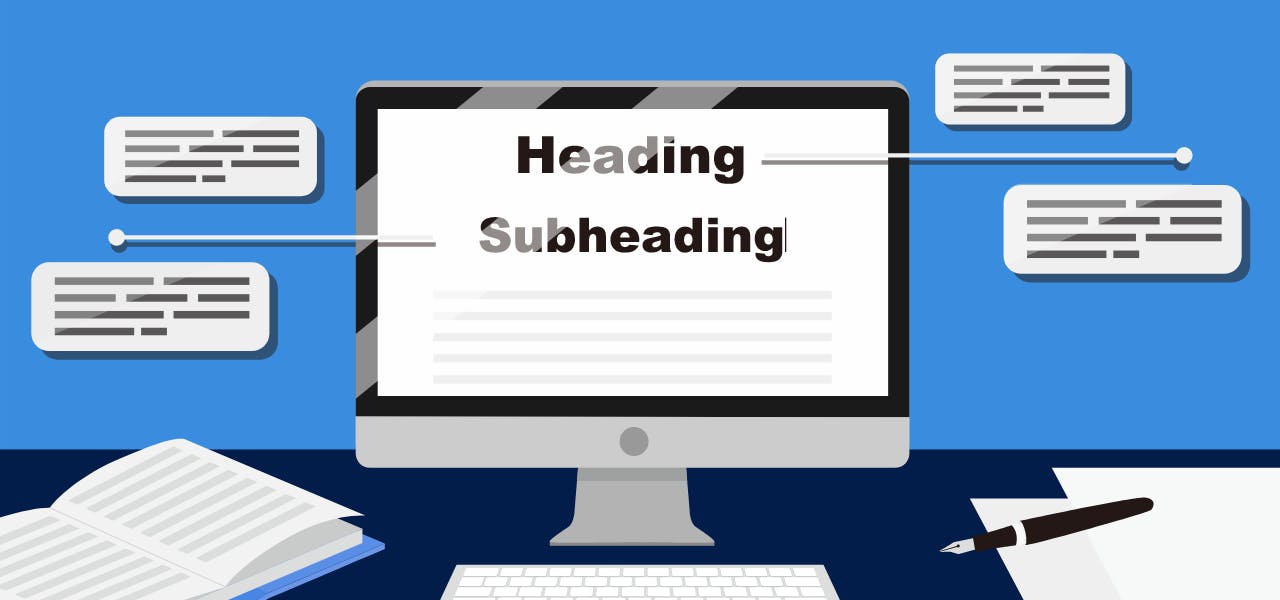When writing an academic paper, the structure is consistent. Higher education papers grow off of what we are taught in elementary and secondary school, but there’s a structure to each format that is obviously important or it wouldn’t be a worldwide standard.
Part of the framework of writing an academic paper is to include headings and subheadings to divide the content into easily manageable sections. Headers and subheaders are used in everything from magazine articles and blogs to classroom textbooks. Although these features are integral in breaking up text into chunks that help the reader navigate through the content, the importance of the way they are worded is often overlooked. With so much content going digital today, the wording of a header and subheader can be the difference between having your article caught by a web crawler and read by your audience or completely overlooked altogether. There’s a purpose to refining your subheadings in research writing that you must understand in order to optimize your work.
Why Headings and Subheadings are Necessary
Academic papers are full of a lot of content. As early as primary school, text is necessary to get information out to the learner. But throwing it all out there on a piece of paper in one big chunk is overwhelming to the eye and, therefore, to the brain. White space is crucial to give our brains a resting point, thus the need for one-inch margins as a set standard for so many academic texts.
Heading and subheadings take this to the next level. They give our brains a chance to breathe and process what we just read, as well as get a heads-up for what we are about to be reading. Subheadings have the main intent of grabbing the readers’ attention and making them pause for a moment. The subheading tells the reader what they can expect to find - the main idea, as it were, of the section.
Each subheading guides the reader through the lengthy text and serves as a table of contents, but there’s an even more important purpose to their job. Your subheading must be eye-catching enough to the reader that they decide the content is worthy of their time and effort. It’s interesting to them and they should continue to read your work.
Those same headings and subheadings are also mined by web crawlers when a user types in keywords in their query. If you’re not using refined choices to carefully create your headings and subheadings, you could be missing out on a lot of potential readers.
How to Know if Your Subheadings are Clear
Subheadings divide the document up into relevant sections, but they also help the reader find their way through your lengthy paper. In academic papers, many readers are searching for something specific. They don’t want to read your entire research experiment to get to what they are looking for, but they do need to know the key parts of your work.
As they are scanning your paper, readers should be able to use your subheadings to understand the flow of the document. To ensure this is possible, make your subheadings clear by asking yourself the following questions as you choose your wording:
● Does the subheading contain keywords that tell the reader specifically what the main idea of the content in that section will include?
● Does the subheading wording match that of the rest of the surrounding subheadings?
● As an impartial reader, would the entire set of subheadings read by themselves create a flow that summarizes your work?
Keep tweaking the wording until all of these answers are yes.
How to Make a Refined Subheading
Ultimately, if your paper doesn’t make it through the web crawlers to get to your audience, it can’t make an impact. Refine your subheading to ensure optimization by using these tips:
● Give each section a unique subheading that includes a description of the content the reader will see until the next subheading.
● Keep the subheadings short and to the point.
● Use keywords in a natural, conversational manner.
● Be sure to separate your headings and subheadings with tags; that is, don’t just change the font and expect the web crawlers to realize it’s a subheading. You have to actually use the formatting option that tags your text as a header or subheader.
● Research keywords that match your content and use them in your subheadings as naturally as possible without stuffing them.
These tips will help your work be seen to as wide of an audience as possible and create a more impactful final result!
